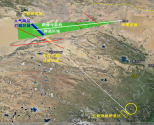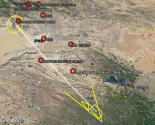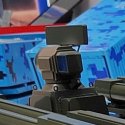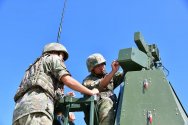Some CGIs depict it as fitted in dual launchers on the HQ-9 vehicle, but I don't think they're reliable.
All the public exercises HQ-19 have conducted have, afaik, been exoatmospheric. It might have a terminal capable component, but I think it's very reductionist to compare it to THAAD which basically only works in terminal phase.
It's based on DF21 boost stage, while HQ-19 is something else. So imho at least they should be 2 different platforms with different roles, not DN3 being the prototype and HQ-19 being in use.
Just digging up some old research on this system I've been following for some time now (the website eastpendulum.com is down unfortunately it covered a lot of this).

NOTAM from 2014 test, likely an early version of this system. The target missile is launched fired from Jiuquan, the green zone represents the possible area covered by the trajectory of the ballistic missile. The HQ-19 interceptor is launched near Korla, top left of the image, which intercepted the target missile in the blue area. These trajectories therefore perfectly justify the closure of civil air corridors ( red line ). The other 2 yellow areas at the bottom right represent the interceptor drop zone. Of particular interest is from the interceptor launch site to the drop zones, there is about 1700km distance, this translates into a minimum post-boost speed of the interceptor at 3.0-3.3km/s (Mach 9.7). Characteristics are indeed quite similar to THAAD.
2017 test, NOTAM was very similar to the 2014. Interceptor launched from near Korla towards Qinghai province, to intercept the target launched from Jiuquan. Delta-v for this is at least 3km/s.

a dutch pilot flying from Hong Kong to Baku, Azerbaijan actually managed to take this amazing photo from his cockpit:

These two tests were just referred to as 'ABM test' by the Chinese defense ministry without specifically mentioning the term 'midcourse' compared to the DN-2/3, which I believe is a technology demonstrator for an interceptor with a closing speed of 7km/s+, like GBI.
My view is HQ-19 is designed to intercept IRBMs like Agni-IV for example, out of the atmosphere as well as at the top endo-atmospheric (requires TVC for this), but not much more, which is pragmatic for the Chinese ABM program to defend against real theater based threats.















